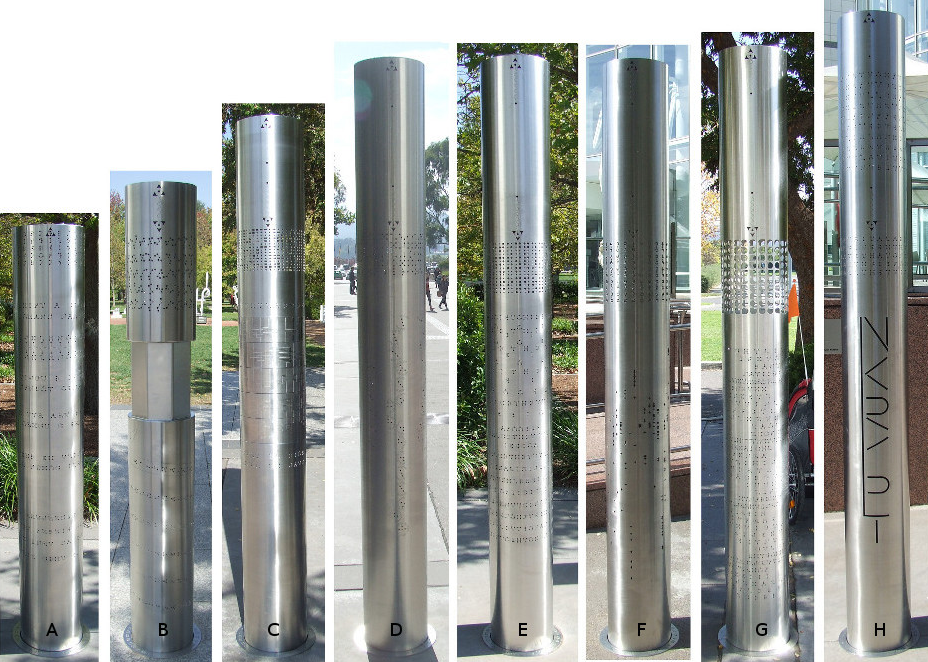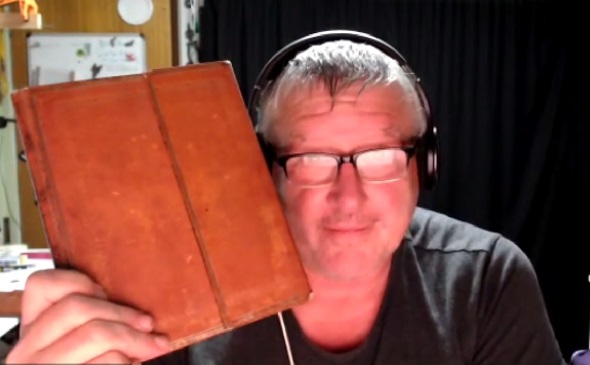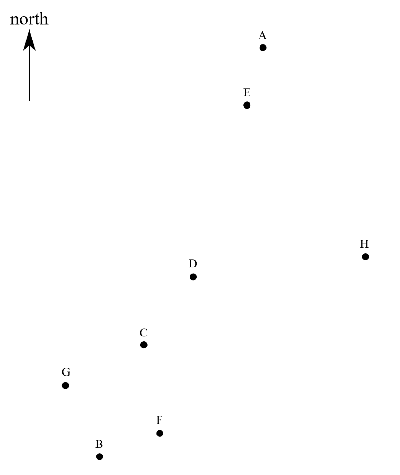Exclusive news about NKRYPT
Stuart Kohlhagen, the creator of the crypto-sculpture NKRYPT, gave an interview to Elonka Dunin and me. He revealed some things to us that were not publicly known before.
I have blogged about Canberra’s NKRYPT sculpture several times. I’ve also reported on it in my books “Codebreaking: A Practical Guide” and “Codeknacker gegen Coemacher”.
NKRYPT is a modern work of art consisting of eight steel columns. It is located in front of the Questacon Science and Technology Centre in Canberra, Australia, and was inaugurated in March 2013. Each NKRYPT column has two directly visible encrypted texts on it, and there are additional cryptograms on the base and at the top of the columns, as well as around the sculpture. About half of the known crypto-puzzles have been solved, the others are still waiting to be deciphered. The methods used range from a rotor cipher to a Caesar cipher to a scytale.
There are two NKRYPT fan websites. One is run by Glenn McIntosh, the other by Greg Lloyd. Glenn McIntosh labels the eight columns with the letters from A to H as follows:

Quelle/Source: Glenn McIntosh
Video conference with Stuart Kohlhagen
The creator of NKRYPT is Australian artist and scientist Stuart Kohlhagen. A few days ago Elonka Dunin and I had the opportunity to talk to him via video conference.
First of all, Stuart sent us a drawing of the eight columns:
This is the template for the production of the artwork. Until now, this diagram was not available for public viewing. According to the designation of Glen McIntosh, the columns are shown here in the order H, G, F, E, D, C, B, A.
In addition, Stuart has told us the following:
- There are a total of about 60 puzzles on and around the eight columns. So there is much more to solve than the 16 cryptograms that can be seen at first glance.
- Also the position and the height of the columns have a meaning. I will discuss this further below.
- The puzzles consist of several layers. So some are not visible or solvable until another is solved.
- None of the cryptograms are based on modern cryptography. Thus, Stuart did not use the AES, the DES, or RSA.
- The PVL cryptogram (pillar H), which I have blogged about before, forms something like a final code. It is only solvable if you know the solution of some others.
Stuart wrote down the solutions in a book he showed us. For obvious reasons, however, we were only allowed to look at this book from the outside.
In addition, Stuart told us some very interesting details about the Squircle cryptogram (Pillar G), which I have also blogged about before. Elonka and I will cover this information in the US edition of our book, “Codebreaking: A Practical Guide”, which is scheduled for release in the spring of 2023. Until then, this matter remains classified.
Positions and height
I found Stuart’s reference to the fact that the positions and heights of the columns also have significance particularly interesting. The height of each column can be seen in the graphic above. The positions can be seen here:
What do these positions and heights mean? A point cipher would be conceivable. But it could also be that the columns are arranged like a constellation and the heights stand for the luminosity of the stars. Elonka has indicated that it could be the Southern Cross.
Of course, a completely different interpretation is also conceivable. Can a reader say more about this?
If you want to add a comment, you need to add it to the German version here.
Follow @KlausSchmeh
Further reading: The NKRYPT sculptures (1): Overview
Linkedin: https://www.linkedin.com/groups/13501820
Facebook: https://www.facebook.com/groups/763282653806483/







Letzte Kommentare